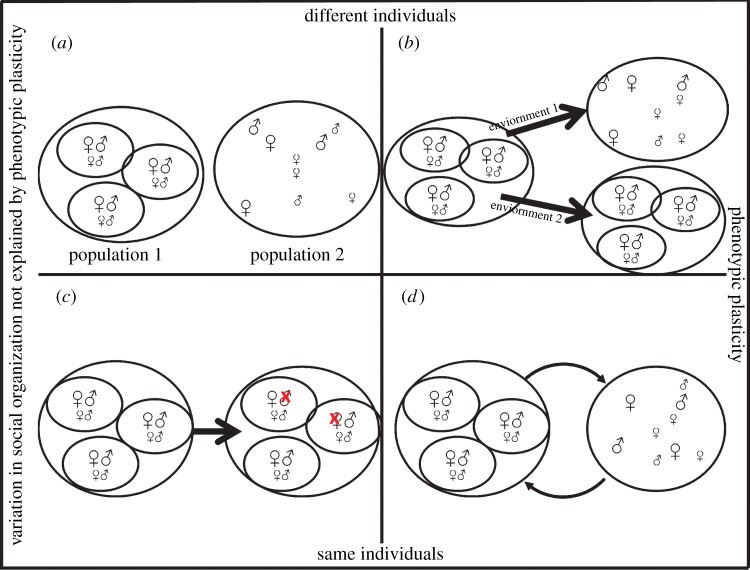Figure 1.
The four processes that can lead to intraspecific variation in social organization. To explain the variation observed at the population level, we need to consider variation at the individual level. Only the two processes in (b,d) represent phenotypic plasticity. (a,b) Different individuals differ in social behaviour. (a) Genetic variation: individuals of the same species but two different populations differ genetically, leading to differences in social organization. (b) Developmental plasticity: depending on the environment in which individuals grow up, environmental cues will activate developmental pathways for social behaviour that either leads to the same social organization as observed in their parent generation (environment 2) or to a different kind of social organization (environment 1). (c,d) The same individuals occur in different forms of social organization. (c) Entirely extrinsic factors: the unpredictable death/disappearance of some breeding individuals is the only cause of changes in social organization. This itself will cause behavioural flexibility in the survivors, such as mate searching, to return to the original state, but flexibility is the result, not the cause of the observed intraspecific variation in social organization. (d) Social flexibility: if the environment changes, social tactics of individuals change, which as a consequence will change the social organization of the population. This is reversible, as the same individuals can switch their tactic again, if the environment changes again. (Online version in colour.)

